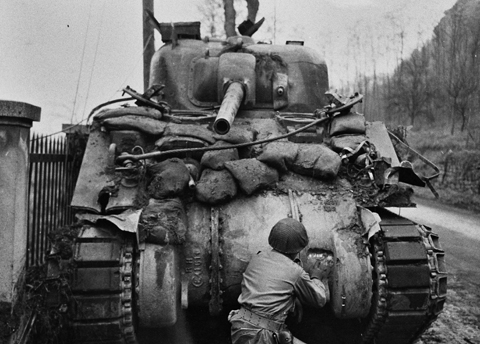From the American Revolution to today, the black soldier has played a significant role in America’s hard-fought struggle in achieving freedom both within the nation’s borders and around the world. From serving on the front lines to holding the highest offices in the Pentagon, African-American men and women have proven time and again that determination, sacrifice, and honor cannot be defined by race.
In the following Q & A, Black Faces of War author Robert Morris discusses the rich legacy of black servicemen and women throughout American military history, the impetus behind writing this book, and the ever-evolving role of the black soldier in the modern military.
---------------------------------------
In the following Q & A, Black Faces of War author Robert Morris discusses the rich legacy of black servicemen and women throughout American military history, the impetus behind writing this book, and the ever-evolving role of the black soldier in the modern military.
---------------------------------------
ZENITH PRESS: While the contributions of the black soldier in American military history have been covered to some extent in books, much of it has been focused on individual or unit contributions within a specific conflict. What inspired you to tackle a much broader, wide-ranging approach in Black Faces of War?
ROBERT MORRIS: Growing up around a number of black combat veterans and officers of WWI and various military conflicts since exposed me to many stories that have never seen print before. Most of the books on black military I have read are unit chronologies, epics of one unit or individual or commonly known history. The discrimination against and humiliation of black servicemen and women has been reported but rarely the specifics. What happened when a WWI black officer encountered a white enlisted man from the south? What happened when a WWII black female WAC encountered a white male officer or enlisted man? What were troop race relations in Korea or Vietnam. This is the type of knowledge I offer in my book and I guarantee most of these stories have never been told in print before.
ZP: What did you find most challenging about researching and writing Black Faces of War?
RM: Finding the first-person accounts and assembling the massive information and illustrations from so many sources. There is about two years of work in Black Faces of War!
ZP: While many Americans are aware of and honor the service of black servicemen and women in recent decades, fewer are aware of the role of blacks in earlier conflicts such as the American Revolution, the American Civil War, and World War I. Can you briefly describe the roles played by black soldiers in this country’s pre-WWII conflicts?
RM: Although many people have heard of the Revolutionary War’s Crispus Attucks, few know of Salem Poor or Peter Salem or that most blacks fought for the British not the Americans. Fewer know that Harriett Tubman not only led slaves to freedom via the Underground Railroad but was a combatant leading the Union Army raid on the Combahee River freeing 700 slaves. How could slave Henry “Box” Brown mail himself to freedom inside a 2 x 3 foot box? How did slave humor and songs help us cope with the vicious southern institution? From the “Bucks of America” to the “Smoked-Yankees” in Cuba…it’s all in this book.







